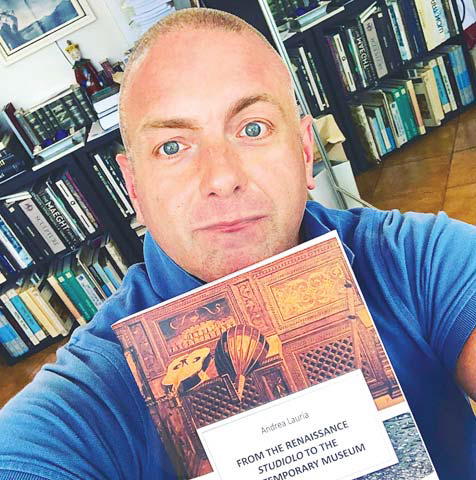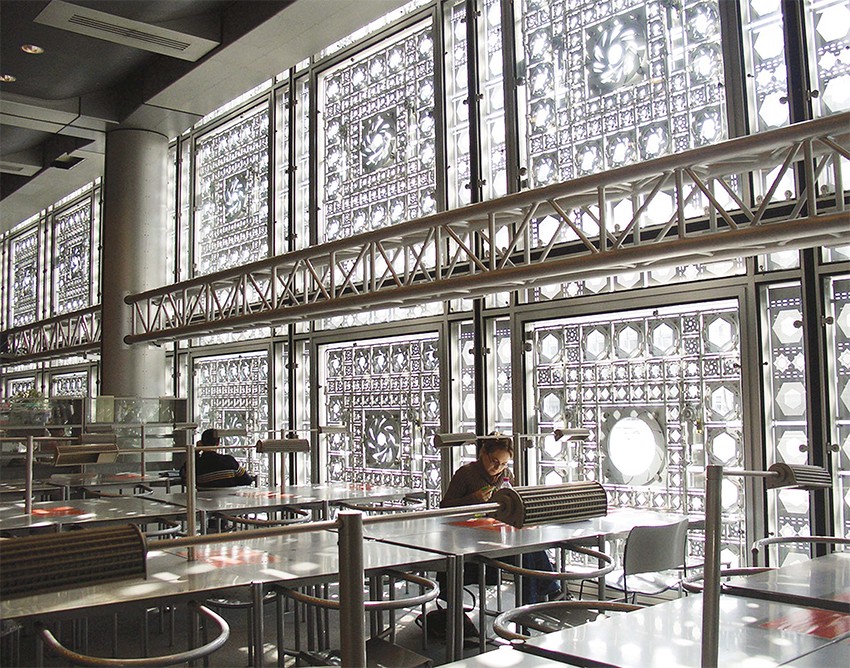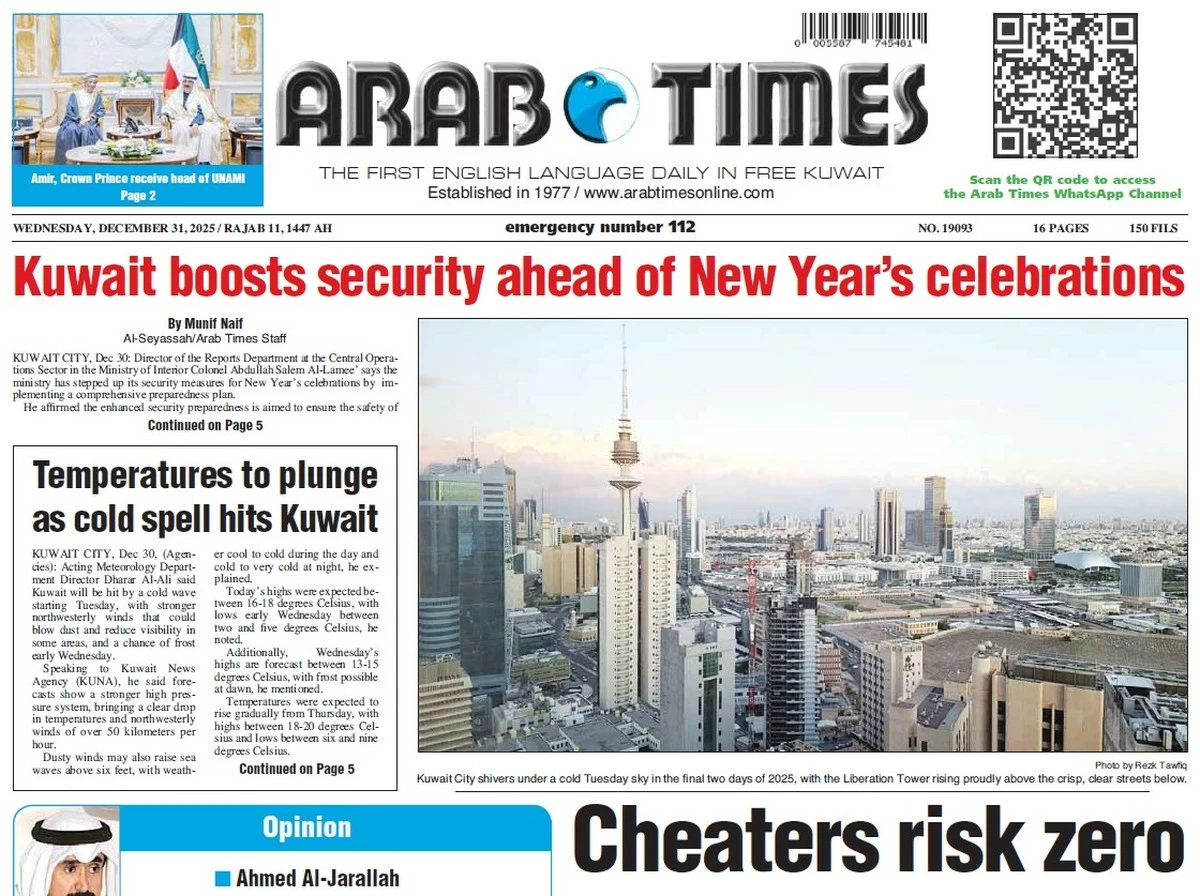07/09/2023
07/09/2023
In the past months I have often talked about works of one of my favorite Archistars, the French designer Jean Nouvel. In the Gulf Nouvel has designed The Louvre Abu Dhabi, established in 2017 and located on the Saadiyat Island in Abu Dhabi, United Arab Emirates and The National Museum of Qatar, opened in 2019 and located in Doha, Qatar. Both museums are not only among the most beautiful hyper-museums in the Gulf but also in the world, they are two art pieces. Jean Nouvel is one of the most famous contemporary world’s Archistars, he has obtained a number of prestigious distinctions over the course of his career, including the Wolf Prize in Arts in 2005 and the Pritzker Prize in 2008 and the Aga Khan Award for Architecture for The Institut du Monde Arabe (IMA) French for Arab World Institute.

Prof. Andrea Lauria (above) is an Italian museologist graduated from Rome’s Academy of fine arts. He also holds a History of Art degree from University di Roma Tre in Rome. Andrea Lauria lectures a Masters course in museology at Rome’s Universities Tor Vergata and American Temple University (Rome Campus). In 2020 he has become a published author of the book: “From the Renaissance studiolo to the contemporary museum” which is also his course manual. Lauria’s field of research is the phenomenon of hyper-museums with special attention to the Arabian countries in comparison with the western world.
Jean Nouvel has always had a special relationship with the Arab world as I told you the French architect has designed two extraordinary iconic Gulf hyper-museums, Louvre Abu Dhabi and The National Museum of Qatar. However, this special relationship with the Arab world began many years before with the design of the beautiful Arab World Institute in Paris project with which Nouvel won the prestigious Aga Khan Award for Architecture in the 1989. The Institut du Monde Arabe (IMA) French for Arab World Institute, is an organization established in Paris in 1980 by France with 18 Arab countries to research and spread information about the Arab world and its cultural and spiritual values.

The Institute was instituted as a result of a perceived lack of representation for the Arab world in France, and seeks to provide a secular location for the promotion of Arab civilization, art, knowledge, and aesthetics. This project is a result of funds from both the League of Arab States and the French government, with the cost of the building totaling around 230,000,000 euros. The Arab World Institute has a really beautiful location in Paris, it is positioned by the Seine river. The Institute was designed and executed by a team of architects including the Archistar Jean Nouvel, in collaboration with other designers, Gilbert Lèzenes and Pierre Soria.
The building designed for the Institut du Monde Arabe (IMA) by Jean Nouvel wants to be a modern architectural symbol of dialogue between Western culture and the Arab world, the Arab World Institute was publicly inaugurated in December 1987. The Institute is an integral part of the Parisian urban landscape, as it echoes the design of the nearby University of Jussieu buildings while clearly standing apart with its mashrabiyas. The Institute houses a museum, library, auditorium, restaurant, offices and meeting rooms. Within the museum are objects, art pieces from the Arab world ranging from before Islam through into the twentieth century. One of the main initiatives within the museum is the inclusion of special exhibitions.
The Architecture-Studio together with Jean Nouvel, won design competition in the 1981. The building was constructed between the 1981 and 1987 and has floor space of 181,850 square feet (16,894 m2). The building is located in the Parisian V arrondissement, in rue des Fossés-Saint-Bernard and acts as a shield zone between the Jussieu Campus of Pierre and Marie Curie University, built in large rationalist urban blocks, and the Seine. The river façade follows the curve of the waterway, reducing the hardness of a rectangular grid and offering an inviting view from the Sully Bridge. At the same time the building appears to fold itself back in the direction of the Saint-Germain-des-Prés district. The building is a mixture of sophisticated design and very advanced technology.
In contrast to the curved surface on the river side, the southwest façade is an uncompromisingly rectangular very light glass-clad curtain wall. It faces a large square public space that opens in the direction of the Île de la Cité and Notre Dame. Visible behind the glass wall, a metallic screen unfolds with moving geometric motifs. The motifs are actually 240 photo-sensitive motor-controlled apertures, or shutters, which act as a sophisticated brise soleil that automatically opens and closes to control the amount of light and heat entering the building from the sun. The mechanism creates interior spaces with filtered light — an effect often used in Islamic architecture with its climate-oriented strategies. The design of the building is very sophisticated and refined demonstrating once again how Jean Nouvel is not only refined architect but brilliant as well. The innovative use of technology and success of the building’s design catapulted Nouvel to fame and is one of the cultural reference points of Paris.
As usual the Nouvel’s projects are very sophisticated and symbolic at the same time, the architect always tries to interpret the symbols of cultures and populations by digging into the past like an anthropologist. The White, grey, and smooth playing with the transparency of the structure, this is how the interior design incarnates the very concept of the institution. Everything in the building revolves around symbolism, the shedding light on AWI’s main purpose and objectives. The books’ tower spirals up to connect the several floors of the library, wide luminous spaces around the courtyard and a forest of columns spreads around the hypostyle hall. This is a reference to Iraqi ziggurats, the Samara mosque minaret, the inside of the Dar Aziza Palace, and the colonnades of the great mosque of Cordoba. The building, not only thanks to the presence of photographic diaphragms, reveals a close and convincing relationship between architecture and cinema. It has such an energy that, visiting it, one has the impression of entering the shot of a film.
This aspect is also underlined by Nouvel’s words – “The sequence of passages between different volumes and levels of lighting, according to the different trajectories inside it, can be seen as a series of angles and openings of a photographic lens.” The IMA is not just an institute of Arab culture: it is a place where Parisians meet, it is a museum and a library, it is an incredible viewpoint but it is also a café where you can chat and relax, it is a place for study and discussion between the two cultures most represented in Paris -- Western and Arab. The architect’s project is amazing, Jean Nouvel demonstrates in this project a remarkable understanding of Arab architecture, culture and spirit.
Indeed, it is possible to draw parallels between some elements of the Institute and a number of traditional Arab buildings. For example, the square and polygonal Mozarabic motifs of the southern walls are inspired by the designs of the Alhambra in Granada. Despite these references to the Arab world, Nouvel knows that the building is located the center of Paris, in the center of Europe and the Institute wants to establish itself as a European building. The idea of a cultural centre, which houses spaces for exhibitions, events, shows, conferences and debates as well as a library, a cinema and a documentation centre, is typically French, it is worth mentioning the famous Georges Pompidou centre.
The Centre Pompidou more fully the Centre national d’art et de culture Georges-Pompidou (lit. ‘National Georges Pompidou Centre of Art and Culture’), also known as the Pompidou Centre in English, is a complex building in the Beaubourg area of the 4th arrondissement of Paris, near the Marais. It was designed in the style of high-tech architecture by Renzo Piano and Richard Rogers and opened in 1977. The Arab World Institute in Paris inaugurated in 1987 it is definitely an institute that promotes Arab culture and arts but thanks to the building designed by Jean Nouvel it does it in an extremely modern and captivating way.
By Andrea Lauria


